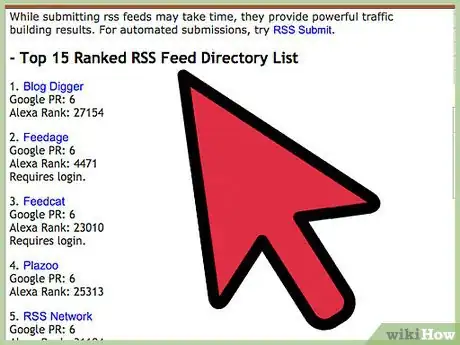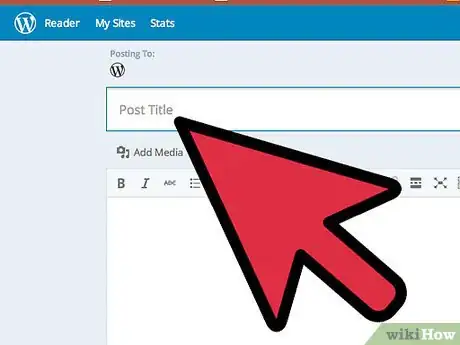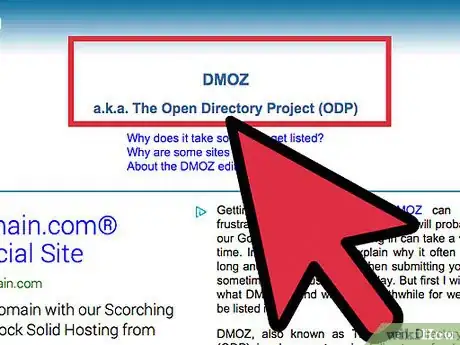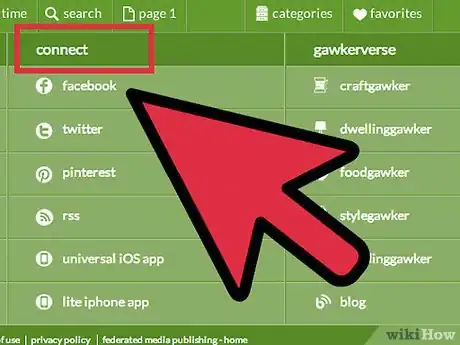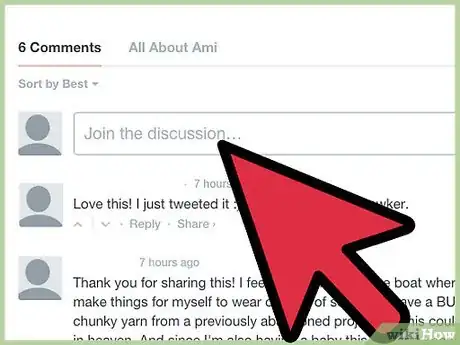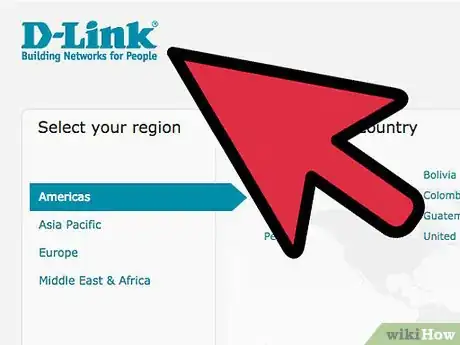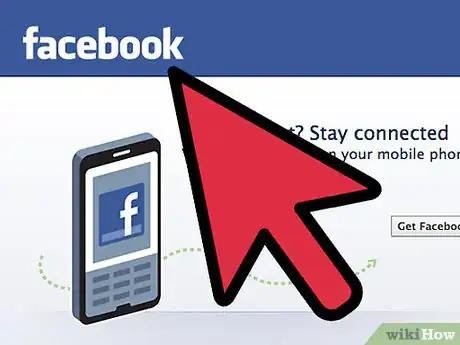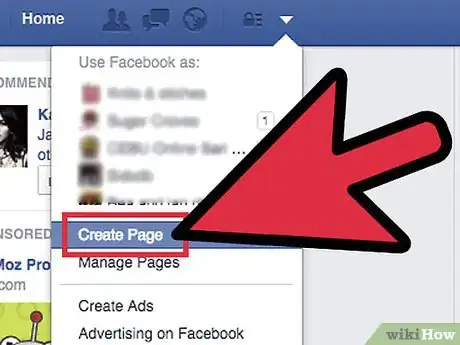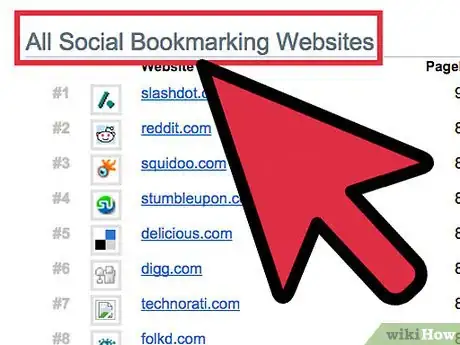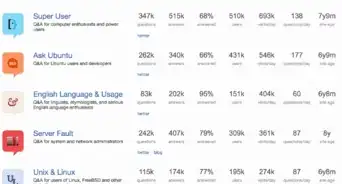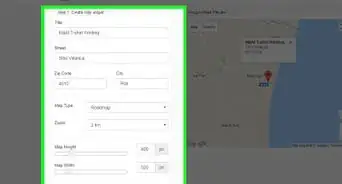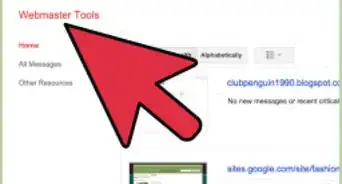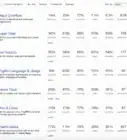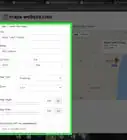wikiHow is a “wiki,” similar to Wikipedia, which means that many of our articles are co-written by multiple authors. To create this article, 40 people, some anonymous, worked to edit and improve it over time.
wikiHow marks an article as reader-approved once it receives enough positive feedback. In this case, 91% of readers who voted found the article helpful, earning it our reader-approved status.
This article has been viewed 45,688 times.
Learn more...
Link building is a very broad term describing anything done to point inbound hyperlinks back to a website (also known as building back links). This can be done by posting comments in forums, submitting articles, submitting links to directories, posting links on social websites, etc. Link-building for your website is one of the primary factors of good SEO (Search Engine Optimization). Your page's rank will be strongly based on the quality of sites that link to your site. Building a good link portfolio takes time, effort, and potentially money, but can significantly improve your site's performance. See Step 1 below to learn how.
Steps
Weaving a Web of Links
-
1Understand how link-building works. Link-building is the process of creating links back to your site. This happens naturally with good content, but can also be helped along through a variety of methods. Back-links are important because they affect the rank that your site receives and where it appears in search results. Multiple factors are taken into account, including:
- Trust - This is the level of trust between sites that are linked. Links on trustworthy sites will weigh much heavier.
- Link Neighborhood - This is the general level of the sites that link to you and you link to. For example, a spammy site will often link to other spammy sites, making the link neighborhood lower.
- Anchor text - This is the text that is displayed in place of the link address. The anchor text should be relevant to the content that is being linked to, as search engines compare this text with the destination it links to.
- Freshness - Since pages become less popular over time, link relevancy tends to decay. Fresh links are a sign that the content being linked to is still relevant, and helps boost rankings.[1]
-
2Find blogs and forums that are related to the content of your site. Both usually have a place where you can add your website's link to your profile that you create, and to your profile's signature. Each time you post a comment in a forum your signature will be left with that comment for all to see, including search engines.
- In order to build a good network of links, you'll want to find sites that fit into your genre. Competition is not something that should be ignored or avoided. Instead, work with the other sites in your field and you will quickly find yourself growing.
Advertisement -
3Submit articles. Article submission is a little more time consuming for link building techniques, but can also help increase your website's page rank if posted on the right sites. Start by writing several small articles concerning topics that have to do with the content on your website. You then submit these articles to websites that will post them for their viewers. Be sure to always add your website link in the source section of your article. That way web crawlers sent by search engine will find the link when crawling the site.
- This method might not be as effective as it once was, due to Google's "panda" algorithm update.[2]
-
4Try RSS Feed Submission. RSS or "Really Simple Syndication", is a family of web feed formats used to publish frequently updated works, such as websites, blogs, and headline news, into a standardized format. RSS documents are called feeds which include text and metadata that are published when your website or blog is updated. This is a huge benefit because RSS feed submissions allow webmasters to publish their websites or blogs content automatically. The more websites you submit your RSS feed to, the more times your new content is published for search engines to find. Like most link building techniques there are many websites out there you can submit your site or blogs RSS feed to.
-
5Answer questions. Question answering can be a very productive link building technique but can also be very time consuming. There are many websites people can go to to post questions and wait for other people to post the answers. This can be very productive because most of these sites allow you to also post a source link with the answer to the question. This will allow web crawlers to find your links as well as allow other people searching for the same answer to follow the link back to your website.
- Putting your link on types of websites that allow you to answer questions may also greatly increase your site's rank due to these site having a higher rank themselves.[citation needed]
- Be careful not to spend your whole day answering questions. This technique is best used by just answering a handful of questions each week. Over time the backlinks will start to build up.
-
6Blog about it. Blogging is another link building technique that can help your website greatly, but can also be time consuming. If done right a blog can not only help build backlinks to your website but also help credit your site, attract new visitors to your site, and promote new pages and information on your site. Remember to always add a link to the blog post so web crawlers and visitors can follow the link back to your website.
-
7Submit your website to directories. Directories of sites is one of the oldest and most common forms of building links. Directories are large collections of links that share genres or subjects. These directories can then be perused by readers and web crawlers.
- Popular directories include: Open Directory Project, Yahoo! directory, and others. There are also directories that are specific to your niche, so do some research and submit your site.
- Most directories require you to manually submit your site, and many are edited by volunteers. This means there can be a significant delay when waiting for your submission to be posted.
- Submitting your site can be a time-consuming process, and is often outsourced to save time and money.
-
8Contact other sites directly. If you have a site that would complement another site, contact the webmaster and inquire about trading links. Links from and to related content will increase the trust value of both sites, and can be mutually beneficial.
- For example, if you have a website about jewelry cleaning tips, contact jewelry shops and jewelry trading sites.[3]
-
9Comment on related content. A quick way to spread your links is to comment on other blogs and articles that are related to your content. There are a few different camps when it comes to the best way to go about doing this. Some suggest placing contextual links to your site within your response, while other's suggest placing it in your signature or profile.
- Place your links in natural locations. Links surrounded with context are much more likely to be considered a "good" link.[4]
- Avoid putting links in sidebars and footers. They are much less likely to get crawled in these locations.
-
10Link out. Besides trying to build back-links to your pages, you should be linking out to other trusted sites in your field. This will help build your trust and improve your link neighborhood. Webmasters of other sites are bound to notice positive traffic from your links, which could lead to partnerships and link swaps.
- As with all of your link-building, make sure you are linking out to relevant content.
-
11Link to more than just your home page. When you are linking to your site in other articles and comments, link to a relevant page or article, and not just to your front page. This will help you raise the rank of pages other than your homepage, which will help your overall presence.
-
12Make guest posts. Many sites and blogs feature regular guest writers. Have a few samples prepared, and contact the webmaster about a guest writing spot. Your guest post is a good place to put a few choice links to your site, as well as include a link in your signature.
- Make sure that your links are relevant.
- Don't use too many links, or your post will come across as spammy.
- Some webmasters may frown on too much self-promotion, so make sure the content of your guest post is still good and worth reading.
-
13Use an RSS feed. Make sure that all of your articles are being broadcast through your RSS feed, and that the feed has been submitted to relevant RSS directories. This will lead to a lot more traffic coming in to your articles, which will lead to more natural back-links.
Creating Quality Content
-
1Write original content. The number one way to get natural back-links is to create useful content. People will do your linking work for you if your content is useful or interesting to them. Creating good content is an art form, and will come with practice.
- Use alternative content delivery methods. Try using comics, podcasts, videos, or any other form of communication to help set yourself apart and build a good brand identity.
- Interviews are a great way to create interesting content as well as network. Interviews are factual and generally bring lots of views from interested demographics.
-
2Make yourself an authority. If you are an expert on a subject, leverage that expertise and make yourself an authority on that subject. If you are providing useful and unique content for your niche, you will find others linking to you as a reference. These are some of the strongest links you can make, as they greatly affect your trust rating.
- If you are able to make yourself enough of an authority, you can find yourself linked in news articles and other major publications. These can lead to massive increases in traffic and rank.
-
3Stay on top of news and recent developments. The internet buzz is constantly shifting, and it pays to stay on top of what's popular. Tailor your content to meet the shifting tides of what is being talked about, and you will find yourself being linked all over the place.
-
4Make sure your articles are error-free. Nobody likes reading an article that is poorly written or riddled with spelling errors. Take some time and proofread your writing. A lot of this polish will come with practice and patience.
-
5Write "Evergreen" content. Evergreen content is content that will always be relevant. This content is good for consistent links, as the content often gets rediscovered at a later date. A strong link portfolio will have several evergreen links mixed in. Some of the best evergreen content include romance, food, parenting, weight loss, pet care, and much more. Common evergreen formats include:[5]
- Lists
- Reviews
- How-tos
-
6Ensure that your site is well-designed and usable. An ugly or unusable site will kill your back-link campaign before it even starts. A visually appealing site has never been more important, and readers will quickly ignore sites that are difficult to use or difficult to read.
Using Social Media
Social media sites typically use NoFollow links, which means they won't count towards your ranking. They are still very good for building traffic, and there is nothing wrong with more views. This can indirectly build your links, as readers drawn to your site start linking to it themselves.
-
1Maintain a large social network presence. Use as many different social networks as makes sense for your site. Twitter, Facebook, Google+, Tumblr, and more are all potential link-sharing treasure troves. Make sure that you have a presence on as many of these sites as you can manage with your time and budget. Building a simple social page usually only takes minutes and can benefit greatly because it allows you to add loads of information and links that help credit your website and at the same time attract new visitors. Millions of people each day search these social websites to find new information, and then share that information with friends and family.
-
2Build social media pages that mirror your content. Make sure that all of your social media viewers can reach your newest content. This will keep them coming to your site, and potentially back-linking to your articles.
-
3Make good use of social bookmarking sites. Social bookmarking is a method for Internet users to organize, store, manage, search and share online resources, such as websites. Digg, Reddit, Pinterest, Stumbleupon, and other sites are a great way to your articles in front of new viewers. Many of these sites let you submit your own article, though they may have limits on how often you can do it. Ideally, your readers will be submitting this site to these social bookmarks for you, building your popularity and trust.
- Many blog platforms have plugins you can use to allow your readers to easily submit your articles to social bookmarking sites.
References
- ↑ http://moz.com/beginners-guide-to-seo/growing-popularity-and-links
- ↑ http://www.sitepronews.com/2012/01/30/google-panda-and-content-farms/
- ↑ http://searchenginewatch.com/article/2064922/131-Legitimate-Link-Building-Strategies
- ↑ http://www.seobook.com/archives/001792.shtml
- ↑ http://www.wordstream.com/blog/ws/2012/10/16/guide-to-evergreen-content-marketing#.



